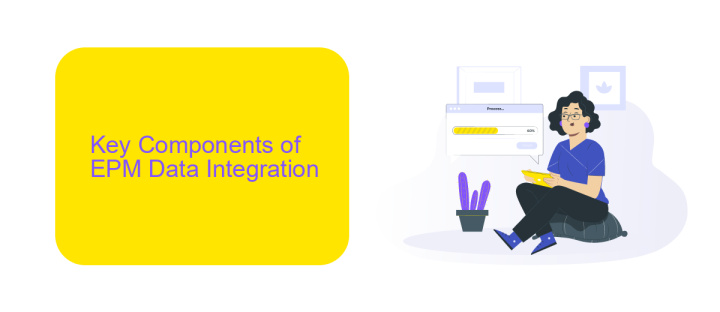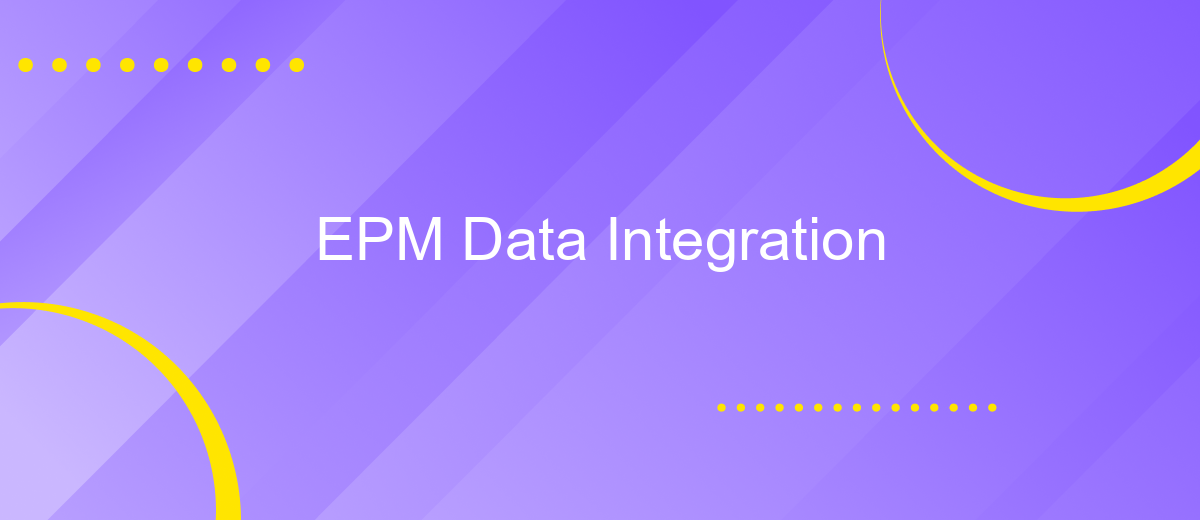EPM Data Integration
Enterprise Performance Management (EPM) Data Integration is essential for organizations aiming to streamline their financial planning, analysis, and reporting processes. By integrating data from various sources, EPM systems provide a unified view of enterprise performance, enabling better decision-making and strategic planning. This article explores the key benefits, challenges, and best practices for implementing effective EPM data integration in today's dynamic business environment.
Introduction
Enterprise Performance Management (EPM) Data Integration is a critical aspect of modern business operations, enabling organizations to streamline their data management processes and enhance decision-making capabilities. Effective EPM data integration ensures that data from various sources is consistently and accurately consolidated, providing a unified view of enterprise performance.
- Seamless data synchronization across multiple platforms
- Improved data accuracy and consistency
- Enhanced decision-making through comprehensive data insights
- Reduced manual data handling and associated errors
One of the tools that facilitate efficient EPM data integration is ApiX-Drive. This service allows businesses to effortlessly connect and automate data flows between different systems, reducing the complexity of manual data integration. By using ApiX-Drive, organizations can ensure that their EPM systems are always up-to-date with the latest information, thereby supporting more informed and timely business decisions.
Key Components of EPM Data Integration

Effective EPM data integration relies on several key components to ensure seamless data flow and accurate reporting. One of the primary components is data extraction, which involves retrieving data from various source systems. This data then undergoes transformation to align with the target system's format and requirements. Another crucial element is data loading, where the transformed data is imported into the EPM system. Ensuring data quality at each stage of extraction, transformation, and loading (ETL) is vital for maintaining the integrity of the integrated data.
Automation tools play a significant role in facilitating EPM data integration. For instance, services like ApiX-Drive can automate the data integration process, reducing manual effort and minimizing errors. ApiX-Drive supports connecting multiple data sources and automating data transfers, making it easier to keep the EPM system up-to-date. Additionally, robust monitoring and error-handling mechanisms are essential to detect and resolve issues promptly, ensuring continuous and reliable data integration.
Benefits of EPM Data Integration

Enterprise Performance Management (EPM) Data Integration provides a streamlined approach to consolidating and managing data across various platforms. This integration is crucial for organizations aiming to enhance their decision-making processes and achieve operational efficiency.
- Improved Data Accuracy: EPM data integration reduces manual data entry and errors, ensuring more accurate and reliable data.
- Enhanced Decision-Making: By consolidating data from different sources, organizations can gain comprehensive insights, leading to more informed and strategic decisions.
- Operational Efficiency: Automating data integration processes saves time and resources, allowing teams to focus on core business activities.
- Scalability: Integrated EPM systems can easily scale with the growth of the organization, accommodating increasing data volumes without compromising performance.
- Compliance and Reporting: Consistent and integrated data aids in meeting regulatory requirements and simplifies the reporting process.
Tools like ApiX-Drive facilitate seamless EPM data integration by automating data workflows between various applications and platforms. This not only enhances data accuracy and efficiency but also enables businesses to adapt quickly to changing market conditions. By leveraging such services, organizations can ensure their EPM systems are robust, scalable, and capable of supporting long-term growth.
Challenges of EPM Data Integration

Integrating data within Enterprise Performance Management (EPM) systems can be a complex and challenging task. The difficulties often arise due to the diverse nature of data sources and the need to ensure data consistency and accuracy across the entire organization.
One of the primary challenges is the integration of disparate data systems, which may use different formats and structures. This can lead to issues with data compatibility and require significant effort to harmonize the data for meaningful analysis. Additionally, maintaining data quality and ensuring real-time data synchronization are crucial to support timely decision-making processes.
- Data compatibility issues
- Maintaining data quality
- Ensuring real-time synchronization
- Managing large volumes of data
- Handling data security and compliance
Using specialized integration services like ApiX-Drive can significantly alleviate these challenges. ApiX-Drive offers seamless integration capabilities that automate data transfer between various systems, ensuring consistency and reducing manual intervention. This not only improves data accuracy but also enhances operational efficiency, making EPM data integration more manageable and effective.


Best Practices for EPM Data Integration
Effective EPM data integration requires a strategic approach to ensure seamless data flow and accuracy. Begin by defining clear objectives and understanding the data requirements of your enterprise performance management (EPM) system. Prioritize data quality by implementing validation processes to detect and correct errors early. Utilize standardized data formats and protocols to facilitate interoperability across different systems. Regularly monitor and audit data integration processes to identify and address discrepancies promptly.
Leverage advanced integration tools like ApiX-Drive to automate and streamline data transfer between various platforms. ApiX-Drive offers a user-friendly interface and robust features that simplify the setup of complex integrations without the need for extensive coding. Ensure that your integration solutions are scalable to accommodate future growth and evolving business needs. Additionally, maintain comprehensive documentation of integration workflows to support troubleshooting and future enhancements. By adhering to these best practices, you can achieve efficient and reliable EPM data integration, driving better decision-making and performance management.
FAQ
What is EPM Data Integration?
Why is EPM Data Integration important for businesses?
What are the common challenges in EPM Data Integration?
How can businesses automate EPM Data Integration?
What should businesses consider when choosing an EPM Data Integration tool?
Apix-Drive is a universal tool that will quickly streamline any workflow, freeing you from routine and possible financial losses. Try ApiX-Drive in action and see how useful it is for you personally. In the meantime, when you are setting up connections between systems, think about where you are investing your free time, because now you will have much more of it.

